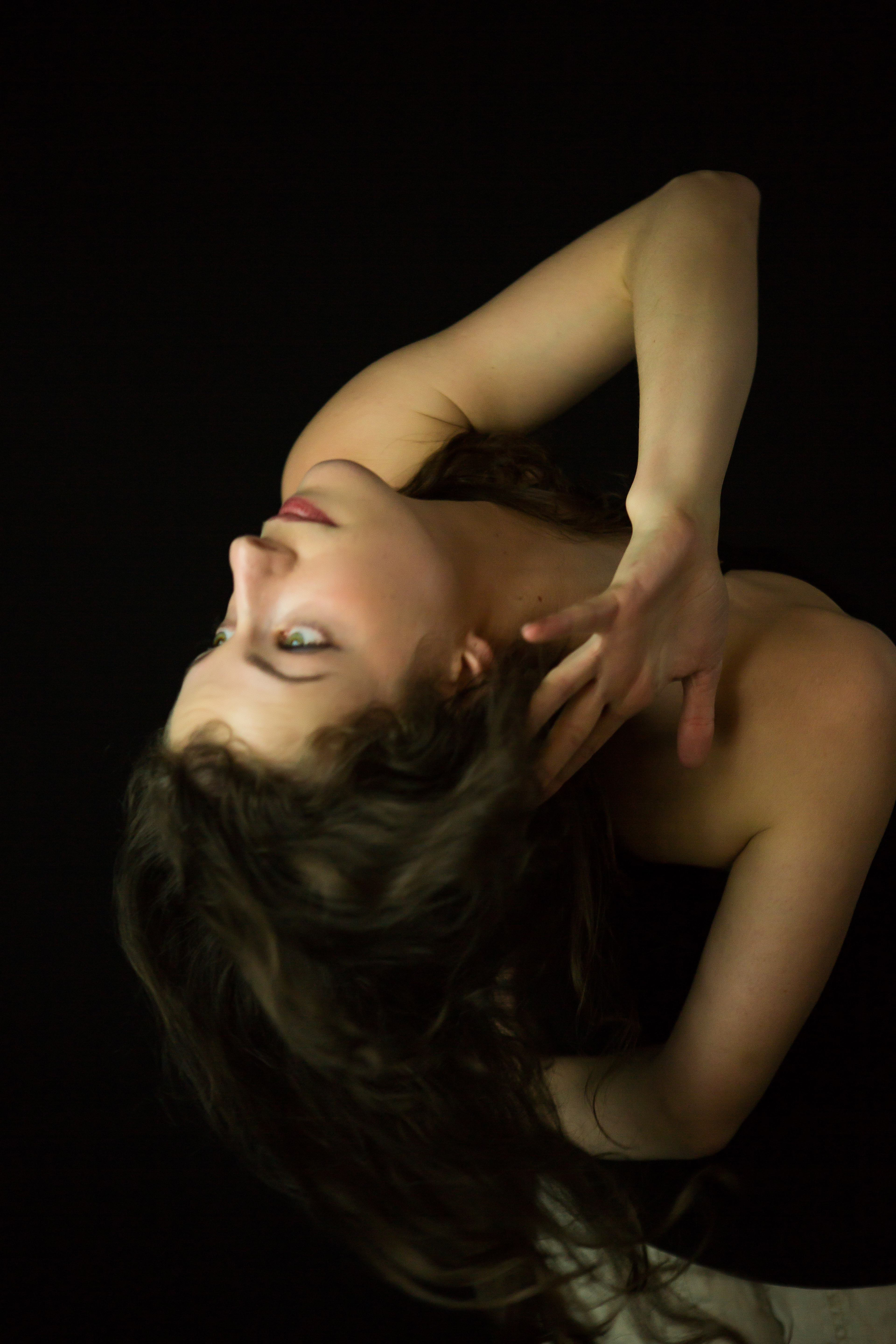CHICAGO — It’s been a while since I’ve seen a dance concert. Truthfully, I can’t remember the last time I saw a single company perform eight different pieces in an hour-long evening. Until Friday night, when I attended Coddiwomple, the Spring performance of Cattywampus Dance at the Ruth Page Center for the Arts.
The all-female company of five twenty-somethings is led by artistic director and choreographer Abby Williams. In the program notes she tells us, “We’re all just trying to make it,” and “We hope you enjoy our chaos.” I can’t say I felt any chaos. All standard theatrical conventions were in play—lights up, lights down; enter in black, exit in black; mind the fourth wall—and there was nothing about the choreography that startled or made things feel off-kilter. Unfortunately, the generic nature of this performance was the only surprise.
There seemed to be some opening-night jitters in the first piece, Whelmed. The partnering was a bit tentative, the unison was not quite exact, and one dancer narrowly missed a curtain collision on her way off stage (haven’t we all?). But the piece was a fine introduction to the ensemble and to the kind of work we would watch for the rest of the night: a company executing dance moves specifically choreographed to music.
The second piece, and best work in the evening, was Opia, performed by Caroline Rose Bondurant and Katherine Stewart. Opia was not notable for its choreography, rather there was something about the chemistry between Bondurant and Stewart that made this work zing. Both strong performers on their own, they ignited one another side-by-side. Stewart has a tight command over her body, performing hyper-speed gestural phrases with crystal clear precision. Bondurant is less squirrly than Stewart, more commanding. Her fully embodied physicality pairs nicely with a confident stage presence. That’s a winning combo that helps flesh-out the otherwise ho-hum choreography.

The rest of the works sort of blur together. There were semi-interesting solos broken up by unison phrasework at moderate tempos, followed by mini-crescendos of strife or occasional moments of whimsy. The lighting, also by Williams, was generally dark and dramatic. They wore dresses in a number of dances, dance pants and loosely fitted shirts in others, and knee-high socks, shorts and tank tops in another. Sure, the pieces were technically different, but the overall feeling was the same.
One of the inherent problems in presenting an evening with multiple short works is that you set yourself up for comparison. The audience is processing each piece in relation to the others and if you do not have enough variation within the works, well… what are we left to conclude?
We could simply conclude that Williams really likes certain moves and motifs like pointing, backwards shoulder rolls, hands clutching one’s body, shaking/convulsing, and collapsing on the floor in the fetal position, to name a few. We can also note that she tends to arrange bodies in space with similar formulas and that she prefers, with the exception of one Judy Garland medley, predominantly moody, sensitive boy-type music.
But after watching eight different pieces I still don’t know what inspires these women. Nor do I have a sense of their point of view. Who are these people? What do they want to say to the world? Why do they want to say it with dance?
And why not make a single full evening-length dance? I, for one, would be interested in seeing how Williams handles the challenge of a compositional arc, the development of the dancers’ “characters” overtime, and the abstraction or narration of conceptual content through movement. There are broader conversations going on in the dance field today and I would be curious to hear Williams’ voice make a contribution in kind.
Of course, not all dance artists have to go down this path and there certainly is a niche in the dance world that celebrates powerful four-minute vignettes—So You Think You Can Dance comes to mind—but even if the goal is to participate in that arena, Cattywampus needs to marinate a little longer. It seems to me that this young company would benefit from more time questioning and examining their choices in order to arrive at a clearer vision and stronger voice. I vote for more research, more diversity—of thought, of perspective, of race, of gender— more experimentation, and more reflection.
— Joanna Furnans
